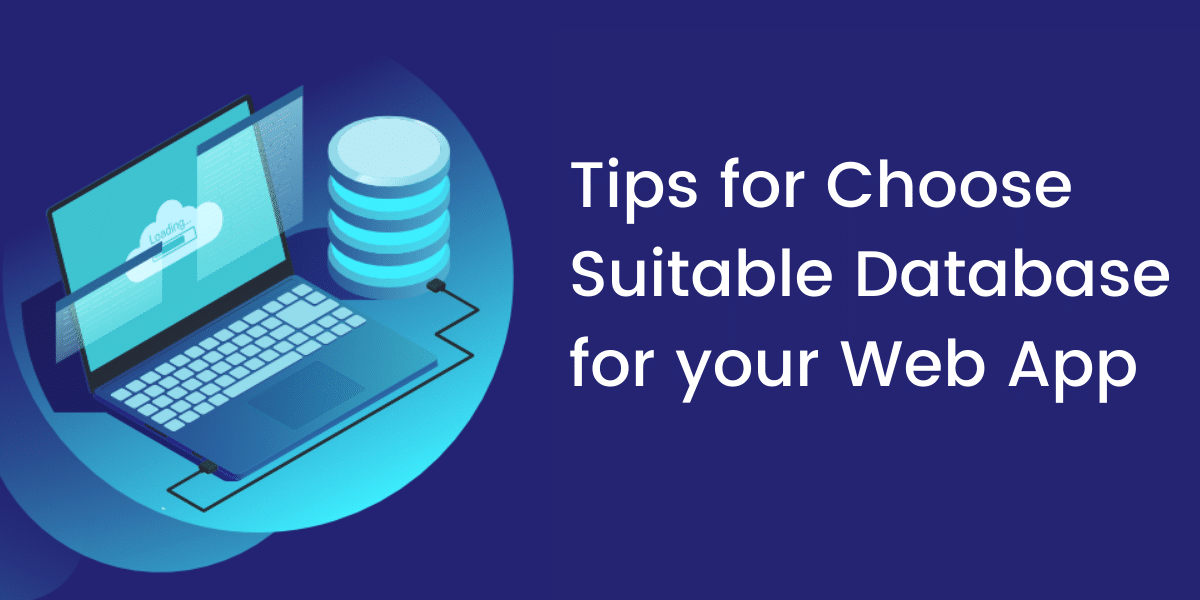
Over the past few years, the craze of developing web applications has increased among businesses worldwide.
They have started developing web apps that help not only to the internal organization but also to their target audience. Moreover, various web apps have also become successful.
Now, if you are planning to develop a web app, you have to decide on some essential things.
Out of all, one of the most essential things is to choose the right web app tech stack. While considering the tech stack, one important thing you need to choose is the database.
However, with various databases available in the market, it might be overwhelming to choose the best one.
To make your task easy, here are some essential tips for the same:
1. Focus on the Four Ss of the database
First and foremost, you need to consider the Four Ss of the database. This includes structure, size, speed, and scalability. Let’s look at all the things in detail:
Structure: The storage of data in a web app relies solely on whether your data is structured or unstructured. Besides this, there is also semi-structured data that falls between the two. Here, properly structured data can be accessed and analyzed easily.
Highly-structured data consist of numerical data. This consists of dates, ratings, numbers, and different kinds of information.
Unstructured data consists of complex data such as videos, audios, social media posts, etc.
Semi-structured data mainly falls between structured and unstructured data. This includes things like CSV, JSON, email, RDF, etc.
Size: Size is the total amount of data to be saved and later fetched. The database can divide the data into various platforms, servers, and systems.
Speed: The speed of the database should be efficient for web developers. Several databases are made for the heavy-ready web apps while several others are useful for write-heavy web apps.
Read More – 7 Reasons To Choose Angular For Your Mobile App Development
Scalability: Several databases can be expanded based on the needs of the business. Here, you should invest enough time in choosing whether your web app needs horizontal or vertical scaling.
Horizontal scaling involves adding more servers while vertical scaling involves integrating additional resources into the running database. The majority of databases are connected with each other and all of them have their own cons.
2. What to choose from SQL or NOSQL Database?
One of the most crucial things is choosing between a SQL(relational) and a NoSQL (non-relational) database.
SQL Database
The relational database categorizes data into tables, which are further divided into rows. These tables and rows are determined via keys. These keys help to fetch data based on the needs. To maintain the entire relational database, the database management system uses Structured Query Language (SQL).
If you utilize SQL for the web application, then it offers a vast number of benefits. Let’s look at the pros and cons of SQL databases.
Pros of SQL
- Massive data can be retrieved smoothly. This includes operations like insertion, deletion, and manipulation.
- SQL is highly portable on a vast number of devices.
- Standardized language for all users worldwide.
Cons of SQL
- It costs more as compared to the NoSQL database.
- A complex interface makes it challenging for some users to access the database.
Most Suitable For
Web applications where data accuracy and consistency are essential such as eCommerce, medical, etc.
NoSQL Database
NoSQL is also known as a non-relational or distributed database. These databases can process and store unstructured data, thus allowing users more adaptability and scalability.
There are three popular types of non-relational databases.
Document
It stores structured information in the form of various simple to complex values. Moreover, every document can be showcased via multiple fields.
Further, this kind of database enables creating complex hierarchies which can be embedded inside the web apps. The document is mainly stored in JSON or XML format.
Examples of well-known document-oriented databases include Amazon SimpleDB, MongoDB, Redi, Apache, Cassandra, etc.
Let’s look at the pros and cons of a document-oriented database.
Pros of Document-oriented Database
- Ability to handle structured and unstructured data.
- Users have the option to change a document without affecting other documents.
Cons of Document-oriented Database
Inter-document querying is unavailable.
Most Suitable for
CMS systems, eCommerce web apps, blogging, and more.
Key Value
In such a type of database, every value is saved with a particular key. This key is mainly a specific identifier liked only to the value and could be anything authorized by a database management system.
Several popular examples of the key-value database include Redis, Dynamo, Riak, etc.
Pros of Key-Value Database
- Adaptability and Efficient performance.
- Better portability.
- Reduce operating costs.
Cons of Key Value Database
- Unable to query values as data is stored as blogs.
- Issues in reporting.
Most Suitable For
Product reviews, blog comments, and more.
Column-based
Column-based databases have qualities of the relational database systems and save data in the form of rows and columns.
The columns might consist of different values. The data can be retrieved from the row or column as per the requirement. Examples of column-based databases include Apache Cassandra, HBase, and Scylla.
Pros of Column-based database
- Update multiple columns effectively.
- Fetches data quickly for queries such as SUM, COUNT, AVG, etc.
Cons of Column-based database
- Challenging to handle individual records.
Most Suitable for
Data warehouses, CRM, and so on.
3. You require more than one database
While carrying out the modeling process, you might understand you want to store data in a particular data structure, where specific queries cannot be completely optimized.
This might be due to several complex requirements, the demand for solid reporting abilities, caching, or establishing a data pipeline.
While integrating more than one database; it’s essential to choose a database with a particular type of data. This database is mainly a basic database for those entities. Any extra database that works with a similar amount of data might have a copy; however, he/she wouldn’t be the owner of the data.
Besides these tips, you can choose a database by asking the right amount of questions.
Answer the Following Questions to Choose a Database
- What particular goal does the application want to achieve?
- What kind of data will you store?
- What’s more crucial: long-term data storage or huge data-insert rate?
- Total number of queries in an hour, minute, or day
- Which programming language will you use?
- Want to have a clear relationship between sets of data or want highly adaptable?
- How essential is adaptability for you?
Conclusion
Database selection is one of the most important parts of the web application. By considering all the essential tips that we have shared and finding the answer to the questions, you can choose the right database for the web application.






